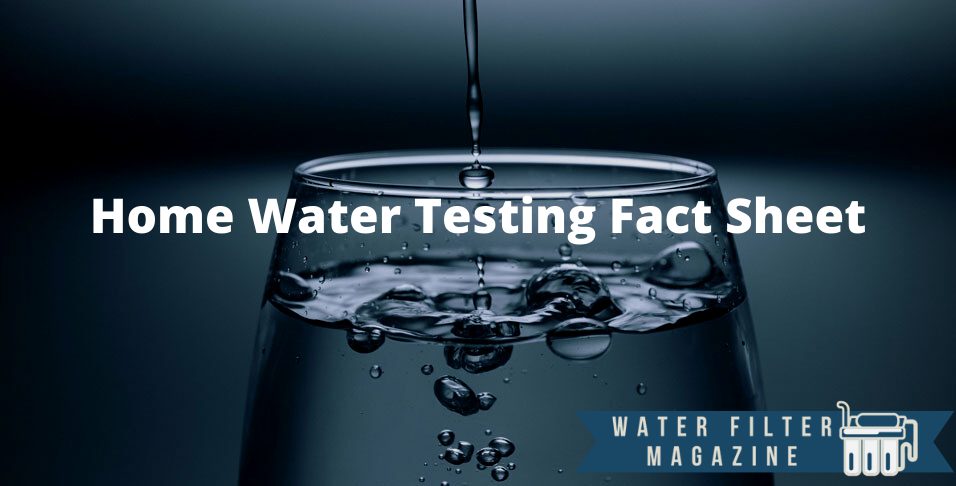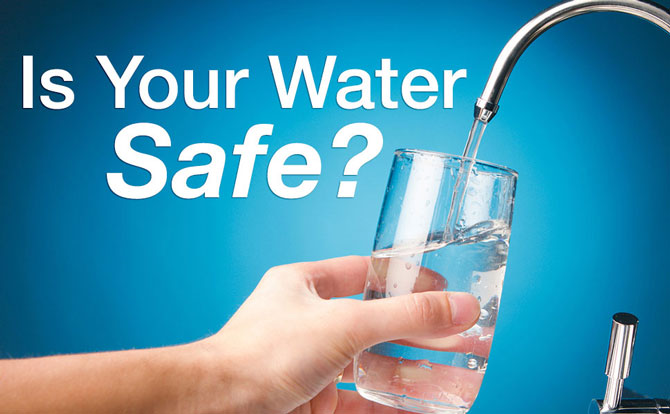 A Home Water Testing Fact Sheet is a document that outlines the key information, facts, technical data, and guidance on home water testing. It can also have information like Frequently Asked Questions (FAQs) on home water testing. A home water testing fact sheet is, therefore, a simplified outline of home water testing.
A Home Water Testing Fact Sheet is a document that outlines the key information, facts, technical data, and guidance on home water testing. It can also have information like Frequently Asked Questions (FAQs) on home water testing. A home water testing fact sheet is, therefore, a simplified outline of home water testing.
A home water testing fact sheet is necessary because more people need to test the water quality of their private wells/boreholes or municipal water but do not know how to do the testing. The fact sheets, therefore, can guide the water users on whether they should have their water tested, which water quality parameters to test for under different circumstances, where to buy the home water testing kits, which water test kits to buy, how to take water samples for testing and interpret the results.
Home water testing kits are simple kits that are mostly used for home testing of water quality and give immediate results from the comfort of one’s home without sending the samples to the water quality laboratory for testing. The home water test kits work through checking for the presence and for some kits the concentration of some of the common water contaminants in the water sample.
There are different kinds of home water testing kits including test strips, color disks, and digital instruments. The kits can test for individual water contaminants, a few common contaminants, or a wider range of contaminants although no single home testing kit will be able to test for the full range of contaminants.
Test strips are the most common and affordable home testing kits ranging between $10 and $30. Home water test strips comprise strips of paper with squares representing the different contaminants that the test strip can test for. When the test strip is dipped in a sample of water or running water, the color of the squares changes and one needs to compare and match the new color of the square on the strip with the color of each contaminant on the chart supplied to understand the results, i.e. to interpret whether the water sample has or does not have the contaminant under test. Some of the test strips do not indicate the concentration of the contaminant but just indicate if the contaminant is in the water sample or not, whereas some indicate the concentration. Furthermore, some strips only test for specific contaminants instead of all the different contaminants simultaneously.
Color discs are also another form of home test kit that is not very popular because one can only test for individual contaminants. One needs to add a water sample into a reusable plastic container together with a liquid or powder reagent. The plastic container gets inserted into a small box for observation. The box has a color disc built into it. The person testing the water needs to spin the disc until the color on the disc matches the shade of the water sample which one needs to interpret the concentration of the contaminant under test. The difference of color discs from home water test strips is that the color disc is more accurate than the test strips as it can show the concentration of the contaminant in the water sample. However, with color discs, one is unable to test for more than one contaminant simultaneously. In instances where one needs to test for a number of contaminants, the use of color discs becomes expensive and time-consuming as one has to buy and use several discs in order to get the water quality status of the water source.
Digital instruments are also a type of home testing kit that can be used for the testing of water quality. Digital instruments are non-disposable, handheld, battery-powered electronic devices that can be used to test the water quality of a sample. Digital instruments are limited to the testing of pH, Total Dissolved Solids (TDS), or Electrical Conductivity (EC) and hence cannot be used for a wider range of contaminants but only in instances where one wants to get an overview of the water quality (TDS/EC) and the alkalinity or acidity of the water. One of the advantages of digital home water test instruments is that they give numerical results of the contaminants under test. Additionally, digital instruments are the most accurate of the home water test kits. The main disadvantage of digital home water test kits is the limited number of contaminants that they can test for.
Why is testing water quality at home important?
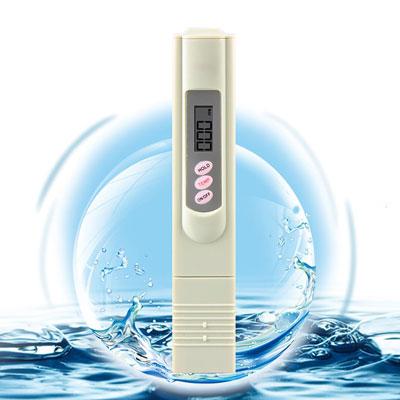 Testing water quality at home is important because it produces immediate results which come out in a few minutes and do guide the water users on whether the water is safe or not for consumption which can then be a basis of whether to conduct detailed laboratory tests or invest in a home water purification system. If the home water quality tests show the presence of contaminants, the water users can immediately suspend the use of such water until remedial action has been taken. This is different from laboratory analysis which can take a minimum of 48 hours up to around 2 weeks depending on the backlog of the water quality analysis at the laboratory such that people might continue consuming contaminated water and affect their health.
Testing water quality at home is important because it produces immediate results which come out in a few minutes and do guide the water users on whether the water is safe or not for consumption which can then be a basis of whether to conduct detailed laboratory tests or invest in a home water purification system. If the home water quality tests show the presence of contaminants, the water users can immediately suspend the use of such water until remedial action has been taken. This is different from laboratory analysis which can take a minimum of 48 hours up to around 2 weeks depending on the backlog of the water quality analysis at the laboratory such that people might continue consuming contaminated water and affect their health.
Home water quality testing is vital because it is cheaper than laboratory testing and analysis. The costs of home water testing are cheaper than laboratory testing because the labor costs of the sampling, testing, or analysis are shifted from the laboratory to the water user. Additionally, home water testing is done using cheap test strips and instruments like test strips, color disks, or digital instruments whereas laboratory testing uses expensive equipment and reagents which overall makes the home water testing process way cheaper.
Water quality testing at home is becoming more valuable because more water users have access to alternative sources of drinking water like private wells or boreholes besides municipal water supply. Unlike the municipal sources or public water supplies that get regularly tested, for private water sources the responsibility lies with the user. It becomes very essential for the individual water user to rapidly test the quality of the water to make sure that there is the consumption of safe water all the time. There are also so many cases of water authorities or municipalities not adequately treating water or leaving traces of contaminants in drinking water. These contaminants need not exceed certain thresholds applicable in that country or area. It becomes also critical to independently home test the water quality so as to make sure that the water is within allowable limits for use otherwise one needs to incorporate additional water purification measures should the need arise so as to ultimately ensure consumption of safe water.
In areas where treated water is supplied, there can also be changes in the water quality during the water delivery process. These can arise from impurities like chlorine as a result of disinfection or rust in the water pipes which can lower the quality of the treated water. It becomes necessary for the water quality to be tested by the end-users to guard against such changes in the water quality.
For private sources of water like well users, home testing allows the water user to monitor the temporal changes in the water quality and incorporate any remedial actions especially if the water quality has been deteriorating over time.
Is home water testing accurate?
Yes, generally home water testing kits are accurate. From the perspective of picking up specific contaminants in water, home water testing kits are quite accurate and reliable. However, the accuracy of home testing kits can be looked at from a different perspective compared to the accuracy of laboratory testing. Home water testing kits like test strips are mostly just able to indicate the presence of contaminants in water or the range of the concentration of the contaminants using color shades except for digital instruments which always give numerical results. In contrast, laboratory tests show the concentration of the contaminant in the water which the home kit can’t do.
The accuracy of home water testing kits is also affected by the storage conditions. Most of the home testing kits like test strips need to be stored away from humidity, heat, or direct sunlight. If the kits are not properly stored, this might affect the accuracy of the results of the water tests conducted.
Before one buys home water testing kits, it is also important to look at the brand of the kit. Some brands of kits have stamps of approval for the rapid tests of the contaminants like the approval by the EPA-certified laboratories for the testing standards. For such approved home testing kits, the stamps show that they have been certified and give assurance to the user.
Digital instruments are the most accurate of the home testing kits. The accuracy of digital instruments can be affected by whether the device is regularly calibrated or not. Where the digital instrument is not regularly calibrated, the results might not be accurate.
What are the most efficient home water testing kits?
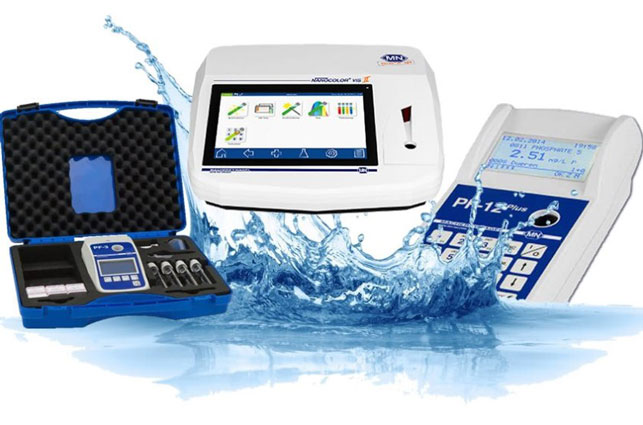 There are a number of different home water testing kits that can be used to test the quality of drinking water ranging from test strips, color discs, or digital instruments. Some of the 5 most efficient home water testing kits are discussed below:
There are a number of different home water testing kits that can be used to test the quality of drinking water ranging from test strips, color discs, or digital instruments. Some of the 5 most efficient home water testing kits are discussed below:
- Varify 17 in 1 Premium Drinking Water Test Kit: The Varify 17 in 1 Premium Drinking Water Test Kit offers one of the best home test kits on the market. The Varify 17 in 1 Premium test kit tests for a comprehensive 17 parameters in drinking water that include lead, fluoride, iron, copper, mercury, nitrate, nitrite, pH, total alkalinity, hardness, aluminum, sulfate, zinc, total chlorine, free chlorine, manganese, and bacteria. The Varify 17 in 1 Premium kit has 100 strips that test for each of the 16 contaminants except bacteria that has 2 tests. The results of the test strips come out within minutes except for bacteria whose results come out in 48 hours. One striking feature is that both the test strips and the bacteria tests are in line with the EPA testing standards. The Varify 17 in 1 Premium test kit is affordable and costs almost S30.
The advantages of the Varify 17 in 1 Premium Drinking Water Test Kit are that it is able to test for many common contaminants, especially in areas where heavy metals might be problematic. The Varify 17 in 1 Premium test kit is also affordable considering that it costs less than $30 and has 100 strips of tests for quite many contaminants. Furthermore, the test results are out in a few minutes making it suitable for use under emergency conditions. The manufacturer, Varify has 24/7 customer support via live chat or e-mail to assist customers with testing procedures and answer any questions or concerns that the customers might have. Varify also donates 5% of the kit sales towards fighting water shortages in Central Africa, thus going towards a charity that addresses water insecurity.
- JNW Direct Drinking Water Test Strips 15 in 1: The JNW Direct Drinking Water Test Strips 15 in 1 is a home test kit that uses test strips for the establishment of the water quality of a water sample. The JNW Direct Drinking Water test kit has 100 test strips and is quite thorough in the sense that each strip tests for 15 common water contaminants that include iron, copper, lead, fluoride, pH, cyanuric acid, total alkalinity, residual chlorine, total chlorine, bromine, ammonium chloride, total hardness, carbonate, nitrate, and nitrite. The only concern is its inability to test for coliform bacteria which makes the test kit not very suitable for the testing of untreated well water, especially in areas with intensive livestock production or in rural areas with septic tanks. The JNW test kit is among the cheapest home test kits as it sells for $20. The JNW Direct Drinking Water test kit comes with a mobile application that can be downloaded onto mobile phones or tablets which can be used for entering the water quality results thus monitoring their time-series pattern and compliance with the standards. Also, it comes with an e-book with EPA standards that helps the user to understand the standards and how to improve the water quality.
The advantages of the JNW Direct Drinking Water Test Strips 15 in 1 are that it is easy to use and read the results, it is cheap, and has many test strips per kit meaning the user can test for 15 contaminants 100 times for only $20. The JNW test kit allows for the temporal monitoring of the 15 contaminants thus the user is able to track any changes in the water quality of the water source or resource. The main disadvantage of the JNW Direct Drinking Water is the test kit’s exclusion of coliform bacteria among the common contaminants that get tested for. This renders the test kit not very suitable for areas where total and fecal coliforms are problematic like livestock farming areas or rural areas with unregulated human sanitation like septic tanks or pit latrines.
- Health Metric Drinking Water Test Kit: This is a simple and quick test kit that is used to test the quality of water from wells or municipal taps. The Health Metric Drinking Water test kit has easy-to-use and reads test strips that can be used to test for 9 common water contaminants in a water sample that include lead, coliform bacteria, copper, pH, total alkalinity, hardness, total chlorine, and nitrate. The use of the Health Metric Drinking Water test kit involves dipping a strip in a water sample and comparing the resultant color with the color chart in the booklet supplied. If there is a change in the color of the strip, the water user gets an alert of the contamination level.
The advantages of the Health Metric Drinking Water home test kit are that it is affordable as it costs about $30, is easy-to-use, offers quick results for all contaminants except coliform bacteria, and the supplier offers good customer care.
- Watersafe Drinking Water Test Kit: The Watersafe Drinking Water Test Kit is a color-coded, easy-to-use, and read-home test strip kit. The Watersafe Drinking Water test strip kit costs less than $30 and is able to test for common contaminants like lead, bacteria, pesticides, pH, hardness, copper, iron, nitrate, and nitrite. The main strength of the Watersafe test kit is that it is very accurate for the lead which was validated by an EPA-certified laboratory for lead detection at minute levels. The test kit has a pack with 6 separate single-use strip tests meaning that for a packet that costs less than $30, one can test the water quality 6 times.
The advantages of the Watersafe Drinking Water Test Kit are that it is easy to use and read or interpret, the results are quite clear and accurate, especially for the lead sensitive test that was certified by an EPA-certified laboratory. Furthermore, the test kit caters to the most common contaminants that are problematic in drinking water. The Watersafe Drinking Water test kit is also affordable such that one can regularly test the water quality considering that a pack has 6 separate tests. The main disadvantage is that the test kits cannot be reused.
- Test Assured Drinking Water Test Kit: The Test Assured Drinking Water Test Kit is an easy-to-use home test kit that uses reagents to test for water quality for either tap or well water. The Test Assured Drinking Water Test Kit is able to test for some of the most common and problematic 10 contaminants in drinking water including iron, lead, bacteria, nitrates and nitrites, copper, pH, hardness, chlorine, pesticides, and total dissolved solids (TDS). The results are instant and come out in 10 minutes except for bacteria whose results take 48 hours to come out. One striking feature of the test kit is that although for 9 of the contaminants it utilizes single-use kits, for TDS the kit uses a reusable electronic TDS meter which becomes handy in areas where the TDS or salts are problematic. The Test Assured Drinking Water Test Kit costs about $35, thus, is reasonably priced.
The advantages of the Test Assured Drinking Water Test Kit are that it is easy-to-use and read and produces results of the common problematic contaminants in drinking water within a short period of a few minutes. Additionally, the test kit comes with a reusable electronic TDS meter which comes in handy in areas where TDS is a major problem. The Test Assured Drinking Water Test Kit is also reasonably priced considering that on top of the single-use test kits, it comes with a reusable electronic TDS meter. One of the disadvantages of the Test Assured Drinking Water Test Kit is that some customers experienced a non-functional lead test.
Each one of the home test kits has its own advantages and disadvantages. The above 5 home test kits are some of the best water testing kits on the market. The Varify 17 in 1 Premium Drinking Water Test Kit and the JNW Direct Drinking Water Test Strips 15 in 1 test kits have strong advantages of comprehensive contaminant lists that they test for and the highest number of test strips of 100 strips per kit. From a price perspective, although all the home kits are in the same price range, the JNW Direct Drinking Water Test Strips 15 in 1 is the cheapest home test kit. From a contaminant point of view, although the JNW Direct Drinking Water Test Strips 15 in 1 has a comprehensive list of 15 contaminants that it tests for, it lacks a problematic yet vital bacterial test that all other kits have. The Test Assured Drinking Water Test Kit has a unique advantage over other kits of the inclusion of a reusable electronic TDS meter that can be valuable in areas where salts are problematic.
How to collect a water sample for water quality analysis?
- The collection of the water sample depends on the water source whose quality needs to be tested and the testing method to be used.
- One needs to follow the instructions supplied by the laboratory or manufacturer in terms of sample collection, preservation, and handling.
- For treated municipal water, one needs to let the water run at a faucet for a few minutes and rinse the sampling bottle and bottle top 3 times with the sampling water before collecting the actual sample for testing. This is done to prevent cross-contamination from the outside environment.
- Likewise, when taking a sample from a private well, one needs to let the water run for over a few minutes to prevent cross-contamination and also to make sure that the well is purged. Purging is the removal of the stagnant layer of water at the top whose quality might be compromised so as to make sure that the sample that will be ultimately tested is taken from fresh water and is representative.
- For analysis or testing at home, the sample is collected in an open bottle where a test strip or digital instrument can be inserted or from where water can be poured into a tube for testing using the color disk.
- The open bottle needs to be sterile through initially rinsing it with distilled water to prevent any cross-contamination.
Who should perform a test for home water?
The collection and performance of a home water test do not need to be done by a specialist with a specific job description and qualifications. Therefore, a test for home water can be done by anyone. What is critical is that the person collecting a water sample and conducting the test just needs to follow the instructions supplied by the laboratory or manufacturer of the home test kit in terms of sample collection, preservation, handling, and testing. Some of the key instructions include avoiding touching the test strips, using clean sample collection and testing containers, and letting the water run for a few minutes from a faucet or well before a sample is collected, using the right amount of a reagent. These are all procedures that can be done even by an untrained person for as long as they properly follow the instructions.
When should a person test the water at home?
As a general rule, home water quality testing should be conducted at least every 12 months to monitor the water quality. It is advisable to test the water irrespective of whether one suspects the presence of any contaminants or not so that one is just sure that the water is safe enough for consumption or for different uses. However, there are other circumstances that warrant the testing or more regular analysis of the water quality. The following are some of the conditions that can help a water user to know when to take water samples.
- When the plumping infrastructure of a house contains lead (test for pH, lead, copper).
- When there are scaly residues and soap don’t lather (test for hardness).
- When a water softener is used to treat water hardness (test for chloride, manganese, iron).
- When there are stained plumbing fixtures and or stained laundry after washing (test for iron, copper, manganese).
- When there is an objectionable water taste or smell (test for hydrogen sulfide, corrosion, metals).
- When there is corrosion of pipes and plumbing (test for corrosion, pH, lead).
- When there are nearby areas of intensive livestock farming and crop production (test for nitrate, phosphorous, pesticide, coliform).
- When there are nearby mining activities (test for metals, pH).
- When there is a salty taste of water and proximity to seawater or an intensively salted road nearby (test for chloride, TDS, sodium).
- When there is a waste dump site, landfill site, industrial operation in the vicinity (test for TDS, pH, sulfate, chloride, volatile organic compounds, VOCs).
- When there is an odor of gasoline, fuel, or gas (test for VOCs).
- When there is a new baby in the household (test for nitrate).
There are a number of factors that require a water user to conduct home testing of the water. Generally, it is vital to conduct home water testing if there are problems with the taste and smell of water, water delivery infrastructure, or the presence of anthropogenic activities in the area.
Which water contaminant affects the water quality test results more?
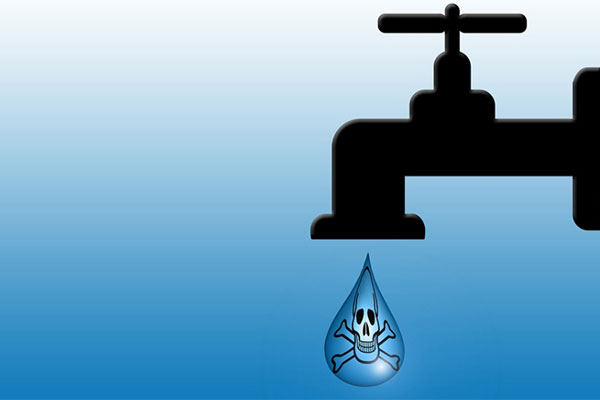 There are a number of water contaminants that one needs to look out for in drinking water. Some of the most common and dangerous water contaminants are discussed below:
There are a number of water contaminants that one needs to look out for in drinking water. Some of the most common and dangerous water contaminants are discussed below:
- Coliform bacteria: Coliform bacteria contamination arises from fecal contamination either from livestock in farming areas or feedlots or from human fecal contamination in pit latrines or septic tanks. When coliforms contaminate water, the water becomes hazardous to consume from a health perspective and can lead to upset stomach, diarrhea, vomiting, abdominal cramping, fever, headaches and can even lead to death. Home test kits can be used for testing for coliform bacteria.
- Lead: Lead is a heavy metal that is common in old municipal pipes although it can pollute groundwater resources from industrial and mining areas. It is quite problematic in some cities as it can contaminate treated domestic water during the water delivery process from the old pipes. Lead is harmful when it accumulates in human bodies as a result of consuming water contaminated with heavy metals. Lead can cause cardiovascular diseases, hypertension, kidney disorders, and brain damage. Home test kits can be used for detecting the presence of the contaminant, lead in water.
- Nitrate: This contaminant is common in areas in which intensive agriculture is practiced like areas with intensive use of chemical fertilizers and manure. High nitrate levels are dangerous especially for kids and the elderly because they can affect the ability of red blood cells to carry oxygen around the body in a condition called methemoglobinemia. Nitrate, therefore, causes the body to be deprived of oxygen, causing a blue-grey discoloration of the skin. Nitrate can also lead to nausea, abdominal cramps, and increased heart rates. Home test kits can be used for testing for nitrate.
- Sulfate: Water that has high sulfate levels has a rotten egg smell. When people consume a lot of water, that can result in gastrointestinal system problems and diarrhea. Home test kits can be used for testing for sulfate in water.
- Iron: Elevated levels of iron primarily cause plumbing problems through the accumulation of iron residues inside the water pipes resulting in the clogging of pipes, fittings, and appliances like washing machines. From a health perspective, an elevated iron concentration is problematic because it can result in poor skin health, digestive problems and an ailment called hemochromatosis that is caused by an overload of iron in the body leading to the poisoning of the internal body organs like the heart, liver, and pancreas. Iron can be tested for using home water test kits.
- Chlorine: Residual chlorine in treated domestic water can cause secondary contamination of water. This leads to health problems like stomach aches, vomiting, diarrhea, and itchy skin. Additionally, chlorine gives water an unpleasant odor and can cause corrosion of water pipes, fittings, and appliances. Home test kits can be used for testing for chlorine in the water.
- Agricultural chemicals: Agricultural chemicals is a blanket term that covers pesticides, herbicides, and fertilizers. These chemicals can leach into the freshwater systems thus possibly contaminating water that will be used for domestic purposes. Even when ingested in minute quantities, agricultural chemicals can accumulate in humans through the consumption of such contaminated water or through the food chain and cause serious health effects like chronic toxicity which can lead to cancer, birth defects, and impairment of the central nervous system. Home water test kits can be used for testing for agricultural chemicals in the water.
- Volatile Organic Compounds (VOCs): VOCs are human-made chemical compounds that have a high vapor pressure and a low water solubility like aerosols, paints, thinners, and petroleum products. When VOCs enter the water system, they contaminate the water resource such that their long-term ingestion has health impacts. Prolonged exposure causes damage to the kidney, liver, central nervous system and is strongly linked to cancer risks. The use of home water test kits can be used for testing for VOCs in water.
All the above-discussed pollutants are classified as contaminants on the Environmental Protection Agency’s (EPA) Contaminant Candidate List (CCL).
Are home water testing kits convenient to the Guidelines for Drinking-Water Quality (GDWQ)?
Yes, home water testing kits are convenient to the Guidelines for Drinking-Water Quality (GDWQ). This is because they are way cheaper than laboratory testing of the different contaminants thus bringing the issue of affordability to the practice of water testing as part of ensuring clean and safe drinking water.
Home water testing also brings convenience for GDWQ in the sense that the results of the water testing are immediate. This can help the water users or decision-makers to quickly make immediate remedial actions like stopping the consumption of the water should it be characterized by contaminants on the CCL. This is in contrast to laboratory test results that can take a minimum of 48 hours up to a number of days depending on the backlog of the water analysis process.
Furthermore, home water test kits offer convenience to the GDWQ as they are very easy to use and do not need specialists to sample, test, and interpret the results. Therefore, any water user concerned because of the quality of his/her water can test the water so as to check compliance with the Guidelines for Drinking-Water Quality (GDWQ).

